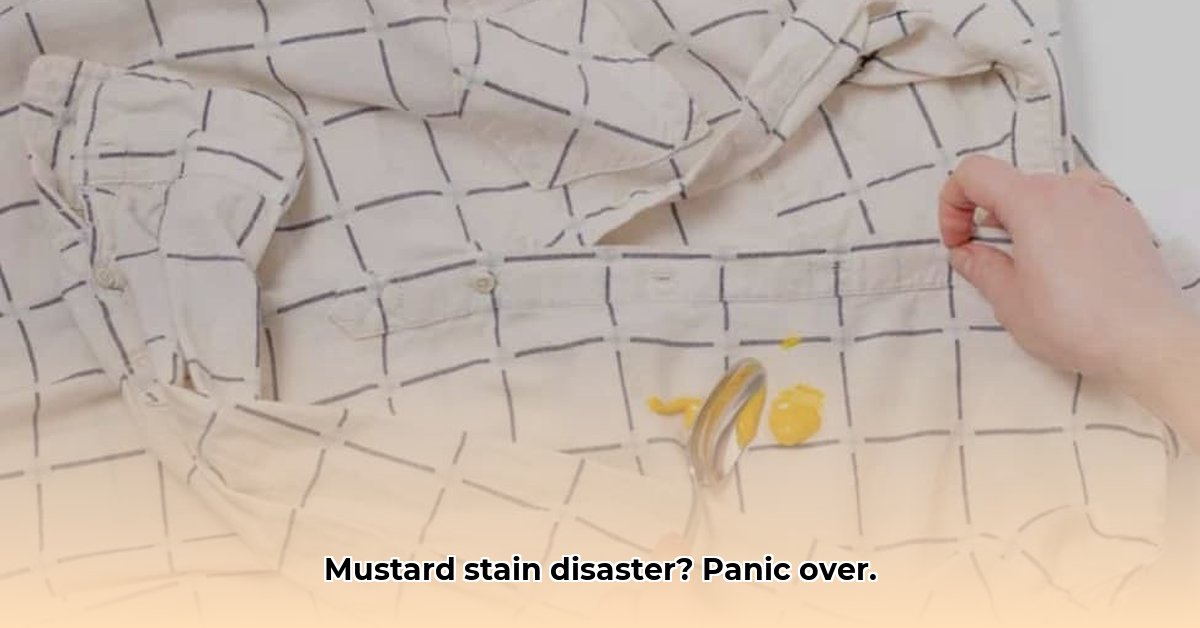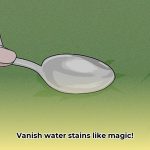Mustard stains – the bane of every picnic-goer and hot dog enthusiast. But fear not! This comprehensive guide will equip you with the knowledge and techniques to vanquish even the most stubborn mustard marks, saving your favorite clothes from a yellowy doom.
Stop That Stain: Act Fast!
The key to successful stain removal is speed. The quicker you address the mustard mishap, the higher the likelihood of complete removal. So, the moment disaster strikes, follow these crucial first steps:
1. Assess the Damage
Take a deep breath and calmly assess the situation. How big is the stain? What type of fabric is affected? Is it a fresh spill or a dried-on disaster? This initial assessment will guide your next moves.
2. Scrape, Don’t Rub!
Using a dull knife, spoon, or even a credit card, gently scrape off any excess mustard. Avoid rubbing, as this can grind the mustard deeper into the fibers and spread the stain. Think of it like carefully removing gum from hair – gentle precision is key.
3. Rinse from the Back
Hold the stained area under cold running water, with the back of the fabric facing the stream. This helps push the mustard out of the fibers rather than forcing it deeper. This technique, sometimes called “back-rinsing,” may be more effective at dislodging stain particles.
Pre-treating: Your Stain-Fighting Arsenal
Once you’ve contained the stain, it’s time to choose the right pre-treatment. Different methods work better for various fabrics and stain types. Here’s your arsenal of options:
1. Dish Soap: The Everyday Superhero
Dish soap is a surprisingly effective stain remover. Apply a small amount directly to the stain, gently work it in with your fingers, and let it sit for 15-20 minutes. Some research suggests that the surfactants in dish soap are particularly effective at breaking down oil-based stains like mustard.
2. Laundry Detergent: A Trusted Ally
Your regular laundry detergent can also work wonders. Apply a small amount to the stain, let it sit for 20 minutes, gently rub, and then launder as usual in cold water.
3. Baking Soda Paste: The Gentle Giant
For delicate fabrics or light-colored items, a baking soda paste is a good choice. Mix baking soda with a little water to form a paste, apply it to the stain, gently rub, let it dry, and then rinse.
4. Oxygen Bleach: For Whites and Colorfasts
If the stain is stubborn or on a white/colorfast garment, try an oxygen bleach soak. Follow product instructions for the correct ratio of bleach to water and soak the garment for at least 30 minutes. Then, rinse thoroughly and launder. Always test in an inconspicuous area first.
5. Vinegar Solution: Dried Stain Savior
For dried mustard stains, a mixture of equal parts white vinegar and water can be effective. Blot the stain with the solution and let it sit for 10 minutes before laundering.
6. Commercial Stain Removers: Heavy-Duty Help
Numerous commercial stain removers are available. Always test any product on an inconspicuous area first and follow the product instructions carefully.
Washing and Drying: Finishing Touches
After pre-treating, wash the garment in cold water. Heat can set stains, so avoid hot water. Air dry the garment to check if the stain is completely gone before putting it in the dryer. If a trace remains, repeat the pre-treatment and washing steps.
Delicates and Dry-Clean Only: Handle with Care
For delicate fabrics, blot the stain gently with a damp cloth and a touch of mild dish soap. Avoid rubbing. If the stain persists, consult a professional dry cleaner, who has specialized knowledge and tools for delicate fabrics.
Prevention: Outsmarting Mustard Mishaps
Prevention is the best cure. Consider these strategies:
- Pre-treat with a Stain-Resistant Spray: Create a protective barrier before potential mustard encounters.
- Practice Mindful Eating: Be aware of your surroundings and minimize risky mustard maneuvers.
- Napkins at the Ready: Keep napkins handy for immediate blotting if a spill occurs.
Troubleshooting: Stubborn Stains and Special Cases
- Stain Remains After Washing: Repeat the pre-treatment and washing process. Multiple treatments may be necessary.
- Delicate Fabric Concerns: For delicate items like silk or wool, always test any cleaning method on a hidden area first. If unsure, consult a dry cleaner.
- Carpet or Upholstery Stains: An enzyme cleaner designed for pet stains can be effective. Test in an inconspicuous area first, spray the cleaner on the stain, let it sit, blot, and allow to air dry.
The Science of Mustard Stains (and Removal)
Understanding the science behind mustard stains can help you tackle them more effectively. Mustard contains turmeric, a natural dye that gives it its vibrant yellow color. Turmeric is also notoriously difficult to remove from fabric. The oil content in mustard further complicates matters, allowing the stain to penetrate fibers quickly. The methods described above work by either breaking down the oil molecules (dish soap, detergent), neutralizing the turmeric dye (vinegar), or gently lifting the stain particles (baking soda). Ongoing research continues to explore more effective stain removal techniques, so what we know today may evolve.
Share Your Stain-Fighting Stories!
Have you battled a particularly epic mustard stain? Share your successes (and any tips and tricks) in the comments below! We learn from each other, and your experience could save someone else’s favorite shirt!
- How to Remove Water Stains from Fabric: A Complete Guide - April 26, 2025
- How to Get Motor Oil Out of Clothes: Proven Methods & Expert Tips - April 26, 2025
- How to Get Deodorant Out of Black Shirts: Easy Stain Removal Guide - April 26, 2025










